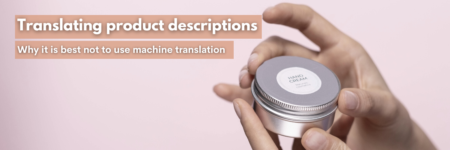How we helped a leading e-commerce agency surprise their client with more than a 50% growth in Amazon Search thanks to 3 simple SEO & content tactics
Hello, my name is Agnieszka and I am the head of the SEO and Content Department at locatheart. I want to show you how we helped our Partner, a renowned Polish e-commerce agency, surpass their client’s expectations by achieving a 2-digit growth in Amazon search rankings across 4 markets.
The markets, Germany and Italy included, are all-important European markets with a strong presence on Amazon.
In this case study, we will guide you through the process that improved the visibility of dozens of products (kitchen utensils) in Amazon search.
The visibility problem
Our Partner was well-aware that a growing number of producers, resellers and vendors had made Amazon a super-competitive marketplace. It was of utmost importance to be noticed in search results.
Our Partner was looking for support in improving the products’ visibility in Amazon search results. They had all the knowledge regarding the workings of the Amazon search engine. But they needed a partner able to provide top-notch keywords for multiple markets and to rewrite and SEO-optimise content in all 4 languages. This is how locatheart came into play.
How we made visibility soar within 5 months
Here’s the 3-step process we implemented to achieve those results:
First, the process
When we started working with our Partner, we had to build rapport and mutual trust. But that wasn’t enough. A large-scale five-month project needed a process.
Second, the keyword research
Similar products were grouped, and each group had a master product and its variants (e.g. different colours and sizes). Usually, there were 8–15 products in each group.
Those groups were then used to create weekly batches. We performed keyword research for 12–20 groups a week, in 4 European languages.
We used a dedicated tool, Helium10, that provided us with detailed information about Amazon keywords. It allowed us to research keyword suggestions based on already identified keywords. Furthermore, it also let us look up phrases used by our competitors.
We created long (50–120 phrases) keyword lists for each master. We also modified those master lists to fit each variant and pointed out the best title keywords for each variant.
The first two batches were subject to approval by our Partner. This was enough to demonstrate that our keyword list was indeed reliable and professionally prepared. And this allowed for an optimisation of the process. Beginning from the third batch, we had our Partner’s complete trust and could pass our keyword lists directly to the team working on product information sets.
Third, content optimisation
Our Partner provided us with existing content sets in the form of .xls files. Their quality varied a lot.
We also worked with fixed word limits for titles (200 characters), bullet points (255 characters) and descriptions (1900 characters). (Collectively, we call these three elements a “content set”; the term can be understood as a varied and comprehensive collection of texts related to a specific product).
There were several types of issues to solve:
- Some content sets didn’t have the required format. For instance, there were too few bullet points. We had to shape the content so that it could conform to the Amazon listing format.
- Some content sets were very short and lacking in crucial data. With most of the descriptions ranging from 300 to 900 characters (and with a limit of 1900 characters), we had to roll up our sleeves. Approximately, 40% of the project consisted in creating content from scratch.
- Many content sets were slightly below the recommended word count and required some adaptation.
- All content sets required SEO optimisation.
In the process, our linguists used their knowledge and experience, whereas the project management team made sure all the guidelines are observed. The locatheart PM team suggested a change to the structure of the working files, which facilitated the process. Our Partner, on the other hand, provided us with focused and relevant feedback regarding master products. The PM team then propagated that feedback to all variants.
As the linguistic work, too, was performed in batches, whenever new solutions and information emerged, we could introduce those elements to the subsequent batch.
So, what are the tactics?
Reading this, you might be wondering about the 3 SEO & content tactics that, as we believe, let us achieve such amazing results. Here they are!
- Identify groups of similar products and select master products for detailed keyword research.
- Perform targeted keyword research using platform-specific data.
- Allow linguists to show their craft within a comprehensive framework of guidelines.
This way, you can keep the costs reasonable on the SEO side and still make the most of your Amazon content.
Our results
Search terms positions improved by an average of 33% in all 4 countries, and more than 50% in Italy!

Bestseller positions improved by an average of 20% in all 4 markets and 25% in France!

And here’s the best part…
After we received this data, we were informed that these numbers cover more products than we had worked on. In simple words – these statistics cover both the products we optimised and the products that were left untouched.
Now this makes these numbers even more remarkable!
What’s your takeaway?
You can get similar results! Simply adjust this process to your product and needs. We can help!
If you found this case study inspiring, I’d really appreciate it if you would share our story on LinkedIn.
I’d also like to hear from you: have you used any of these steps to improve your positions in search results? Leave a comment and let me know.
Agnieszka







Leave a Reply